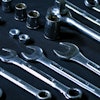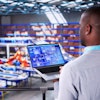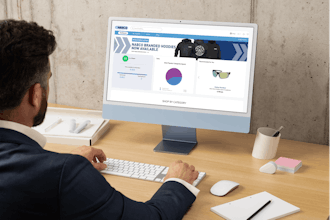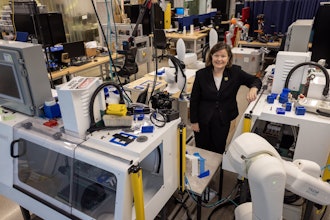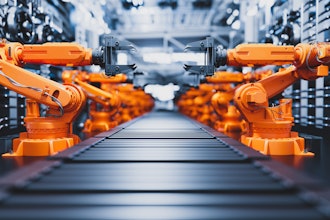The transformation from logistics organization to sales organization can be a desirable, yet difficult, undertaking for today’s industrial distributor. Many companies that have sought to undergo such a transformation have done so through the implementation of technology that has allowed them to automatd both their sales team and the e-commerce aspect of their respective businesses. This has led to greater visibility of products, easier self-service for customers, and a sales team more capable of providing value-added services. Infor, a provider of enterprising software solutions for customer relationship management, supply chain management, and enterprise asset management, assists distributors in researching, acquiring, and implementing technology designed to accomplish such tasks. Andy Berry, VP and GM of Distribution for Infor, recently discussed both the technology and strategies that distributors employ to help spur the transformation from logistics organization to sales organization.
Berry: We have many customers that have an e-commerce environment, but I won’t say it is as interactive as people are now demanding it. What we’re starting to see is inside sales groups be more responsive and provide more information actually using the e-commerce site internally. That allows the customers to see what the inside sales team sees, and the amount of content that can be provided over an e-commerce page is far greater than what you typically store in an ERP application, which is more transactional.
From a sales perspective, there also has been an increased use of iPads and other tablet devices. What kind of value-added services can the salesperson provide now that he or she has much more information at his or her fingertips? Now he or she can be more about providing solutions as opposed to just showing up and taking orders.
Q: It seems like some of this functionality is almost an expectation for customers now, correct?
Berry: I would completely agree. I would also say that not all of our customers realize that yet. About half of those that see it are taking action on it, but some just don’t believe it to be the case.
Q: For those that do understand, are there key aspects of their business that need to be ready to undertake an effort to become more of a “sales organization?”
Berry: Regardless of the ERP system that’s in place, you can’t be constrained by what you have ERP-wise. There has to be a solution that provides a real-time bridge off that ERP to a different environment.
The change in solutions available and the expectation on how quickly they can be deployed are quite different from the expectations about how quickly they can change a core ERP system. So we’re starting to see people less reliant on their ERP and more reliant on the integration to the outside applications that are very lean and very nimble.
If your sales guys want CRM, but IT answers that it will be an 18-month upgrade of the ERP, that used to be an okay answer. That’s no longer an okay answer.
Q: How are companies adjusting to the new technology on the sales side? Are they really leveraging it effectively?
Berry: Some companies are doing better than others. I would say the limitations lie with the training and recruitment of a different skillset.
Q: What are some of the ways companies can prepare their salespeople to go out in the field and make the most of the technology and their initiative?
Berry: We hear that salespeople still like to have the ability to write down orders on paper, they know all the parts in their head, and they feel like that’s sufficient. But I disagree when I hear that feedback. That same expectation used to be there when you went and ordered something online. You went and looked at the one item you got and then you bought it. How often now do you log onto a site and see some more items that you hadn’t thought about and ordered those as well? The industry we’re in, most employees are longstanding ones that are very knowledgeable. You can’t do away with that overnight. At the same time, the amount of additional sales and the expectations from the customer is just changing. It’s a hard dynamic to deal with, and nobody has an easy answer.
Q: There’s a certain type of customer out there that’s more apt to go about purchasing in a more traditional way, and there are those that are more apt to go with this new-school approach. Can companies blend the two effectively?
Berry: The ability for the core system to support many different means of a user to interact with it is critical, and we see a lot of that.
Q: Any time you invest in new technology, there’s going to be a cost. Are distributors seeing a reasonable return on investment?
Berry: I would say there expectation is that they’d drive additional business from their current customers. Having a much more dynamic sales guy out in the field should be able to increase sales production. That’s step one. Step two is looking for the web e-commerce to really expand their geographic territories without the cost and complexity of expanding their business. A lot of our customers will say that they get 5-10% of their business from e-commerce and the expectation is it will be 40% two years from now. But they are going through the exercise of determining whether that’s current customers moving to the web or some additional customers that they’ve never seen before.
Q: Are there any reasons why companies would be hesitate to go down this path?
When it comes to value-added services, we’re seeing this trend develop quite rapidly. But you can see a lot of reluctance to put something flashy online that will make them feel like they are cannibalizing the customers that are already buying from them. But we are seeing a lot of value-added services that are trying to target new customers.
Q: Is this a trend that’s still on the rise?
We’re starting to see it become more prevalent on the industrial side. It might be the product profile that makes the difference. Wholesale distributors are actually extending the reach of their ERP systems inside the four walls of their customers. That’s the value they can provide. They will maintain the storeroom as if it was another warehouse in their operations. The customer can check things out over the web with scanners, and all the replenishment and everything you’d expect in a warehouse is now automated at their customer level. That allows wholesale distributors to sell a much more value-based solution than just replenishing parts.
Then there’s mobility. Once you provide it, mobility can turn a truck into a real-time, replenished warehouse. Now the order to replenish the truck is sitting at the dock door when the truck shows up, and there’s a lot of value in that.
People are coming to us about upgrading their ERP, and their not doing it to get a better financial package. They are looking to upgrade their ERP so it has the ability to extend all these new leading-edge solutions that they know their competitors are securing.

